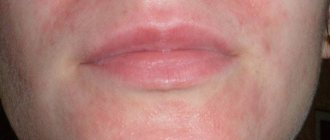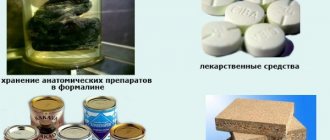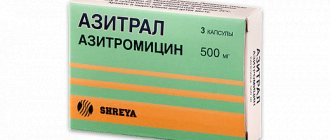Nitrous oxide is a narcotic pain reliever. It is used in surgery, for labor pain relief and in gynecology.
Nitrous oxide is an odorless and colorless gas with a density of 1.527 (heavier than air). Dissolves in water in a 1:2 ratio. At a temperature of zero degrees Celsius and a pressure of thirty atmospheres, as well as at normal temperature and pressure of forty atmospheres, it turns into a colorless liquid. From one kilogram of nitrous oxide liquid, five hundred liters of gas are obtained.
In small doses, the drug causes drowsiness and a feeling of mild intoxication. That's why it is also called laughing gas. Inhalation of pure gas leads to asphyxia and a narcotic state. The correct dosage of medical nitrous oxide promotes the transition to a narcotic state without any side effects, including the absence of preliminary arousal.
The drug has weak narcotic effectiveness, so it is most often used with other, stronger types of anesthesia.
Pharmacological properties
Pharmacodynamics
Dinitrogen oxide is a means for inhalation anesthesia. The mechanism of action is due to the ability to interact nonspecifically with neuronal membranes, inhibit the transmission of nerve impulses in the central nervous system, and change cortical-subcortical relationships.
Characterized by high analgesic activity. In small concentrations it causes mild drowsiness and a feeling of intoxication.
The analgesia stage is reached 2–3 minutes after inhalation of a gas mixture containing up to 80% nitrous oxide and 20% oxygen. 6–8 minutes after a short-term but quite pronounced stage of excitation, stage I of surgical anesthesia begins.
To maintain anesthesia, a dinitrogen oxide concentration of 40–50% with a corresponding increase in oxygen concentration is sufficient. In this case, sufficient relaxation of the skeletal muscles is not achieved. In this regard, to achieve the required effect, nitrous oxide is used in combination with other agents intended for inhalation anesthesia and muscle relaxants.
Awakening occurs 3–5 minutes after stopping the supply of the inhalation gas mixture.
Nitrous oxide depresses respiration, causes peripheral vasoconstriction, increases heart rate, and can increase intracranial pressure.
Pharmacokinetics
Through the lungs, nitrous oxide enters the systemic bloodstream. In plasma it is in a dissolved state and is not metabolized. It is excreted primarily through the lungs unchanged (after 10–15 minutes), in small quantities through the skin.
The half-life is 5–6 minutes.
Penetrates well through the blood-brain and placental barriers.
Indications for use
According to the instructions for use, nitrous oxide is used in the following cases:
- Inhalation combined anesthesia in combination with narcotic analgesics and muscle relaxants, carried out using special equipment;
- General anesthesia in operative gynecology, general surgery, dentistry and for pain relief during childbirth, which does not require muscle relaxation and deep anesthesia;
- Prevention of traumatic shock, as well as to enhance the analgesic and anesthetic effects of other drugs, including therapeutic analgesic anesthesia after surgery;
- Relief of pain in acute pancreatitis, myocardial infarction, acute coronary insufficiency;
- Switching off consciousness for pain relief during medical procedures.
Preparing for anesthesia
When the patient is prepared for nitrous oxide inhalation, he is given a sedative. Recently, anesthesia is increasingly combined with drugs such as fluorotane and cyclopropane. Thanks to this, it is possible to achieve the required depth of anesthesia to perform a major surgical operation. However, these drugs may not be used for every organism. They have a number of contraindications that must be taken into account by the doctor.
Before inhalation anesthesia, you must adhere to a fasting diet and also take the pills given by the doctor. Basically, the patient is prescribed sedatives that relieve stress before surgery and reduce tension levels.
Contraindications
- Pathologies of the nervous system;
- Hypoxia;
- Chronic alcoholism or state of alcohol intoxication;
- Breastfeeding period;
- Hypersensitivity to the drug.
The drug should be used with caution in patients with traumatic brain injury, intracranial tumor, or a history of increased intracranial pressure.
If it is necessary to use it during pregnancy, the drug is prescribed in small concentrations (in a 1:1 ratio to oxygen) for a short time (within 2-3 breaths).
Nitrous oxide, instructions for use: method and dosage
Nitrous oxide is used in the form of inhalation in combination with oxygen and other anesthetics using special equipment for gas anesthesia in hospital settings.
Typically, anesthesia begins with a mixture containing 70-80% dinitrogen oxide and 20-30% oxygen.
Recommended concentration of dinitrogen oxide:
- Therapeutic anesthesia for the relief and prevention of pain: 40-75%;
- General anesthesia: dose for rapid immersion to the required depth of anesthesia - 70-75%, maintenance dose - 40-50%. If necessary, powerful narcotic drugs can be added to the mixture, including fluorotane, barbiturates, and ether. After turning off the supply of dinitrogen oxide, it is recommended to continue the oxygen supply for another 4-5 minutes in order to prevent diffusion hypoxia;
- Pain relief during labor: 40-75%, using the method of intermittent autoanalgesia, in which the woman in labor begins inhaling the mixture when warning signs of contraction appear and stops at its peak or towards the end of the contraction;
- Blackout for medical procedures: 25-50%.
The concentration of nitrous oxide for children is selected individually, and the oxygen content in the mixture should be 30% or more. After completion of anesthesia, it is necessary to continue inhalation oxygen supply for 5 minutes to prevent hypoxia.
Inhalation anesthesia is carried out against the background of premedication. In order to prevent nausea and vomiting, to reduce emotional arousal and enhance the effect, intramuscular administration of 2-3 ml of a 0.25% solution of droperidol (5-7.5 mg), 1-2 ml of a 0.5% solution of diazepam (5-10 mg).
The need for inhalations in pediatric dentistry
Most often, treatment with nitrous oxide is not carried out at the request of the parents. This method is chosen by the doctor when meeting the child. Nitrous oxide should be used for inhalation in the following situations:
- If the child has a lot of neglected teeth.
- With panic fear developing into hysteria. He will be afraid of the doctor and interfere with this treatment in every possible way. Sedation will calm the child and help him get rid of his fear of dentists.
- At preschool age. The baby simply will not be able to sit for an hour or more in the dentist's chair.
If the doctor insists on use, you must take his side. However, you should make sure that the child has no contraindications to this type of anesthesia.
Side effects
The use of Nitrous Oxide can cause side effects in the form of bradycardia, supraventricular arrhythmias, circulatory failure - during the period of introducing the patient into a state of general anesthesia.
Undesirable effects after recovery from anesthesia may include: drowsiness, nausea, vomiting, diffuse hypoxia, confusion, anxiety, agitation, nervousness, hallucinations, motor agitation. Long-term use (2 or more days) can lead to respiratory depression, impaired bone marrow function (leukopenia, pancytopenia), cause postoperative chills and hyperthermic crisis.
Disadvantages of this type of inhalation
Even this gentle inhalation method has its drawbacks. These include the following:
- It is impossible to put the patient into a state of deep anesthesia. This method does not allow for major surgery.
- If a large dose is administered, the level of oxygen saturation in the blood will decrease. This can cause hypoxia.
- The contractile activity of the myocardium will decrease slightly, but will decrease.
- If during the operation the patient feels severe pain, he may twitch sharply, thereby complicating the doctor’s work.
- Large doses may contribute to depression of brain activity.
Overdose
An overdose of Nitrous Oxide can be manifested by the following symptoms: respiratory depression, acute hypoxia, decreased blood pressure, arrhythmia, bradycardia, delirium.
Treatment:
- bradycardia: administration of atropine at a dose of 0.3–0.6 mg;
- arrhythmia: correction of gas levels in the blood;
- circulatory failure, arterial hypotension: reduction in the depth or cessation of general anesthesia, administration of plasma or plasma substitutes;
- hypertensive crisis: cessation of inhalation, increased oxygen supply, correction of metabolic acidosis and water-salt balance disorders, administration of antipyretics. If necessary, dantrolene is administered intravenously at a dose of 1 mg/kg (the total dose should not exceed 10 mg/kg) until the symptoms of the crisis stop. To avoid a relapse of the crisis, dantrolene is used for 1–3 days after surgery (orally or intravenously at a daily dose of 4–8 mg/kg in 4 divided doses);
- respiratory depression or inadequate postoperative ventilation: reducing the dose of anesthetic (if still used), maintaining the airway or artificial ventilation;
- delirium after recovery from general anesthesia: administration of a narcotic analgesic in small doses.
Nitrogen inhalation in the treatment of children
Most often, dental treatment for a child is not complete without the use of anesthesia. One of the best methods to calm your baby and set him in a positive mood is inhalation with nitrous oxide. It is administered to children in very small doses, and the child does not even fall asleep. Of course, if the baby is having a strong tantrum, it will be better if he falls asleep for half an hour. Then they use nitrous oxide for anesthesia. Usually this time is enough for the dentist to finish manipulating the diseased tooth. Many parents are confused by this procedure. They don’t know how the child’s body will tolerate it, whether side effects will occur, and whether he will get worse after inhalation. Therefore, it is necessary to understand all the nuances of the procedure, learn about its advantages and disadvantages.
special instructions
The use of the drug must be accompanied by monitoring blood pressure, heart rate (HR), heart rhythm, as well as monitoring the state of gas exchange and respiration, and the patient’s body temperature. During anesthesia, it is recommended to periodically pump out gas from the endotracheal tube cuff.
The use of Nitrous Oxide is indicated in the treatment of infants and older children. The drug should not be prescribed to newborns.
Prolonged contact with the drug among medical personnel increases the risk of developing leukopenia.
Certain concentrations of the mixture with cyclopropane, ether, and chlorethyl are explosive.
For patients with chronic alcoholism, high concentrations of dinitrogen oxide are required.
Impact on the ability to drive vehicles and complex mechanisms
The drug is not used when driving vehicles and machinery.
Disadvantages of use in children
Among the disadvantages of this procedure, the following side effects can be noted:
- Some children may have a headache or dizziness.
- The smell of gas may not be pleasant to the baby and may even cause a gag reflex.
- Nitrous oxide should not be used during a runny nose or any other respiratory disease.
- The sedation procedure is quite expensive.
- There are times when a child, on the contrary, becomes too active and excited during inhalation. This phenomenon is considered an exception, but is nevertheless possible.
- Nitrous oxide does not eliminate the need for an additional anesthetic.
Drug interactions
With simultaneous use of nitrous oxide:
- Amiodarone - increases the likelihood of arterial hypotension and bradycardia that cannot be controlled by atropine;
- Fentanyl and its derivatives - enhance the effect on the cardiovascular system, help reduce cardiac output and heart rate;
- Xanthines – increase the risk of arrhythmias;
- Tranquilizers, inhalation anesthesia agents, neuroleptics, narcotic analgesics, antihistamines - enhance the effect.
When combined, the drug enhances the effects of diazoxide, ganglion blockers, diuretics, coumarin and indandione derivatives, and agents that depress the nervous system and respiration.
Benefits of Nitric Oxide Inhalation
Among the advantages of this procedure, the following properties can be noted:
- The substance does not contain toxins and does not poison the body with them. Internal organs are not affected by it.
- A person quickly falls asleep and wakes up easily.
- The gas is very quickly removed from the respiratory organs. This is not accompanied by unpleasant sensations or poor health.
- There is no effect on the lungs or bronchi.
- Absolutely safe substance.
Reviews of Nitrous Oxide
Reviews of nitrous oxide as a means for general anesthesia on websites and forums are few: anesthesia is well tolerated and does not cause serious side effects.
Most often there are reports of the use of nitrous oxide in dentistry in children. Parents write that nitrous oxide was recommended to them by a dentist as a sedative after the child flatly refused to have his teeth treated. In this case, the gas mixture is fed through the nose. The treatment, accompanied by sedation, was successful, the child was conscious, but calmer than usual. The only side effects described are drowsiness after the procedure.
N20 in the food industry
Due to the fact that nitric oxide does not have a harmful effect on the human body, it is actively used in the food industry. The properties of nitrous oxide are such that it is a good preservative, since in a gas environment the proliferation of bacteria and fungi is significantly slowed down. But this is not the only option for using it.
In food preparation and production, nitric oxide is used in the following cases:
- for cooling non-alcoholic and low-alcohol drinks, as well as for freezing food;
- as a preservative, in this case ordinary air is pumped out of the sealed package, and N2O is pumped in its place. This makes it possible to significantly increase the shelf life of many food products;
- when preparing porous chocolate for confectionery purposes, as well as for the production of whipped cream;
- for final preservation of wine. In this case, oxide is pumped into the bottle of wine, into the space free from the drink, before closing, so it is possible to completely stop the fermentation processes in the wine itself.
If this chemical compound is used as a preservative, it is designated E942 on the packaging. It is noteworthy that this type of food preservation is absolutely harmless. The gas does not react with the food, and if you open the package and break the seal, it will simply evaporate.











